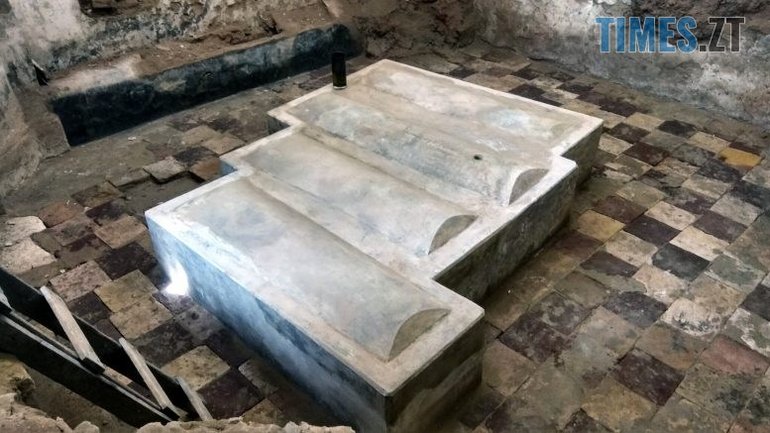A historical find discovered at the Jewish cemetery in Berdychiv will become a place of pilgrimage

This is reported by TIMES.ZT.
"People often feel cold, coming in severe frosts and sitting here praying for hours. To make them more comfortable, we decided to insulate the floor. We opened up the floor that was here - tiles and concrete. We went down some 10-15 cm and found the remains of the wall," says Akiva Niemoy, assistant to Chief Rabbi.
The wall that the community came across during the renovation works has an unusual shape with rounded corners. The space inside it was littered with construction debris. Under it was a floor with tiles and the tombstones themselves without inscriptions. There is a hole in one of them, though its purpose is unknown.
The rabbis assume that this is the real grave of Levi Yitzhak.
"We get a lot of requests from people who are excited about it and interested in what it is, how it is and, of course, everyone wants to come and see it with their own eyes. But for now, because of the quarantine, it will be a little delayed," says Akiva Niemoy.
Local historians say that the Righteous was born in 1740. There were 30 generations of rabbis in his family. In 1785, he came to Berdichev, where for almost 30 years the Rabbi served not just as an intermediary between God and people.
"The Tzadik who headed the court, that's the phrase. He was not just a clergyman, but to some extent a Prosecutor, a judge, let's say. They respected him, came for advice, received religious and legal instructions," says Natalia Zakharchuk, a researcher at the Museum of History in Berdychiv. People loved the righteous man. After all, according to archival sources, he was reasonable and condescending. Especially to the destitute and the poor.
"When he traveled to villages and towns, he collected donations from people, not only for his community but also for poor brides who could not collect a fortune. He collected money for people in need, for those who were in prison, to buy them out of prison. He was close to the people," Natalia adds.
The Rabbi died in 1809. Before his death, he ordered that no inscriptions be found on his grave.
"We don't know exactly how original the monuments and the floor are. Most likely, they were updated for more than a hundred years of their existence. But the significance that we now have for us is the very first-religious significance," says Akiva Niemoy.
The first burials in this cemetery date back to the end of the XVII century. The last ones were in 1973. The Jewish community does not know what the tomb of Levi Yitzhak looked like before the war. Akiva Niemoy says: the Jews destroyed the structure themselves. They were afraid that the authorities would destroy the tombstones altogether.
For the descendants, a concrete platform with a low wall was filled in, and a tombstone for the Righteous was placed on the side. In the early 90s, a new room was built on the site of the tomb of Rabbi Levi Yitzhak, to which the pilgrims came from all over the world. His relatives are buried around him.
Today, the descendants of the Righteous live on different continents. The community will turn to specialists to ensure that the world-famous Rabbi's memory is properly memorialized with maximum convenience for pilgrims.









